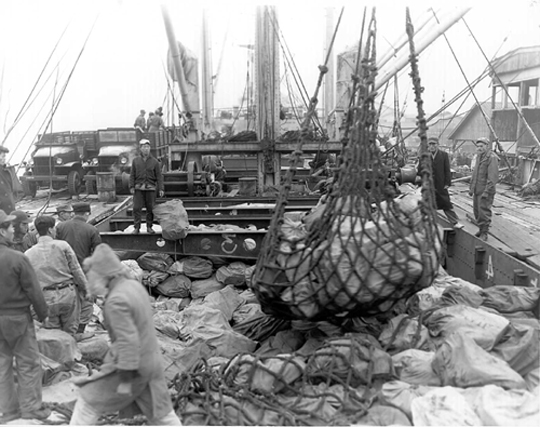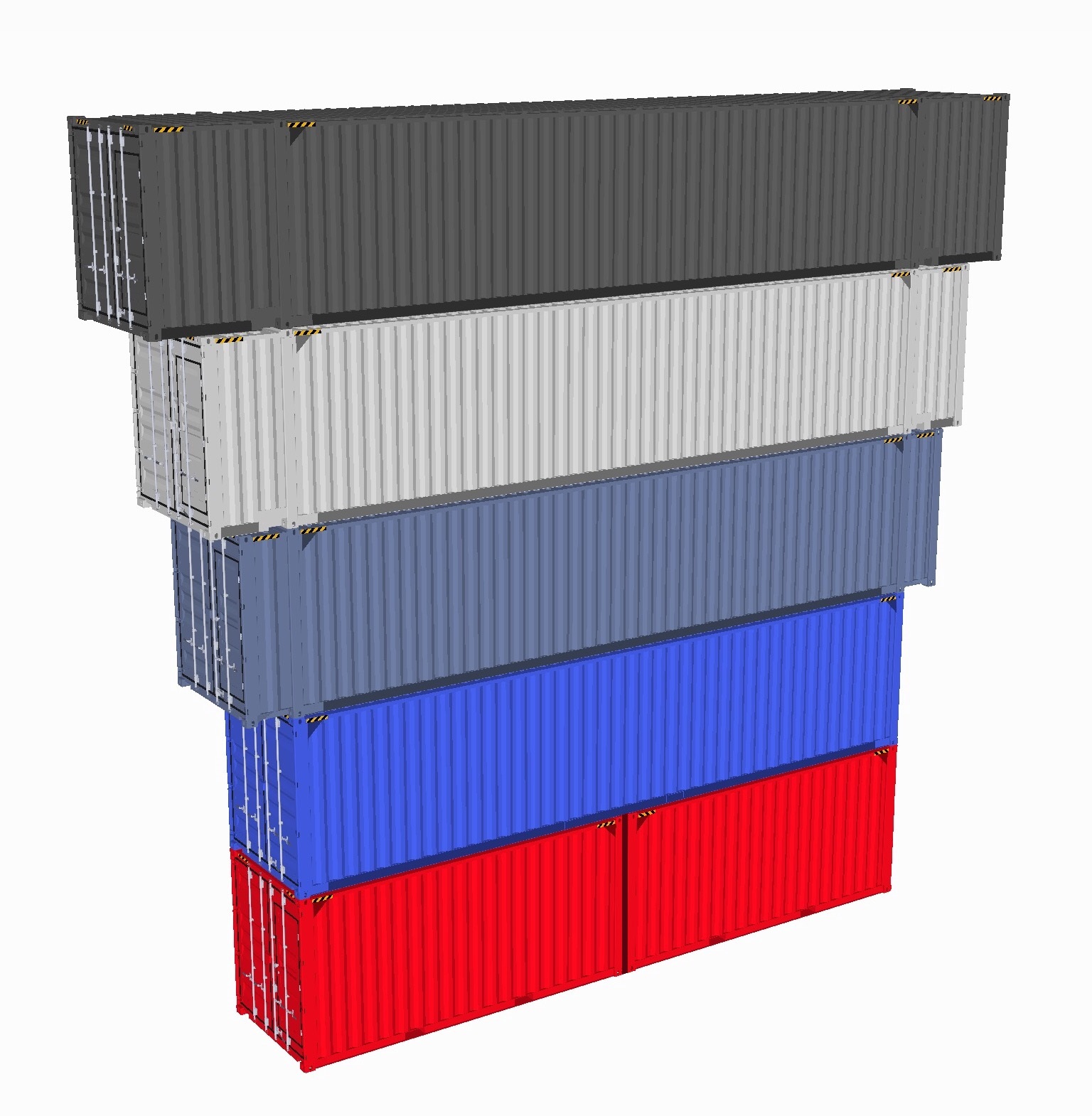|
Hong Kong Express (ship)
''Hong Kong Express'' is a fully cellular container ship of the ''Hamburg Express'' Class owned and operated by the German shipping company Hapag-Lloyd Container Linie. Hull and engine ''Hong Kong Express'' was completed in March 2013 by Hyundai Heavy Industries in their shipyard in Ulsan South Korea under yard number 2244. The vessel, which is operated by German shipping company Hapag Lloyd Container Linie has a capacity of 13,092 TEU and 800 reefer plugs for carrying of refrigerated containers. The ship has an overall length of , beam of and a maximum draft of . Her deadweight is 127,170 DWT, gross tonnage is 142,295 GT and net tonnage is 60,481 NT. The main engine is MAN B&W 12K 98ME-C7, which has total output of . The engine turns a single screw or one propeller which is of a tunnel thruster design with rudder-fin. ''Hong Kong Express'' has a service speed of 24.6 kts, while the maximum speed exceeds 25.5 kts. Accidents On September 29, 2015 the container ship ''Hong ... [...More Info...] [...Related Items...] OR: [Wikipedia] [Google] [Baidu] |
Hapag Lloyd
Hapag-Lloyd AG is a German international shipping and container transportation company. Hapag-Lloyd was formed in 1970 through a merger of Hamburg-American Line (HAPAG) and North German Lloyd. History The company was formed on September 1, 1970, by the merger of two German transportation/maritime companies, Hamburg-American Line (HAPAG), which dated from 1847, and Norddeutscher Lloyd (NDL) or North German Lloyd (NGL), which was formed in 1857. Since its formation, Hapag-Lloyd has seen changes among its shareholders and has also undergone a number of mergers with other companies. For instance, Hapag-Lloyd was completely acquired by, and became a subsidiary of TUI AG (Hanover) in 1998. This transition was followed by TUI selling a majority stake of Hapag-Lloyd to private investors in Hamburg in 2009 and further sales in 2012. Other important events in the company's history include Hapag-Lloyd's acquisition of CP Ships in 2005 as well as Hapag-Lloyd's merger with the container ... [...More Info...] [...Related Items...] OR: [Wikipedia] [Google] [Baidu] |
Hyundai Heavy Industries
Hyundai Heavy Industries Co., Ltd. (HHI; ) is the world's largest shipbuilding company and a major heavy equipment manufacturer. Its headquarters are in Ulsan, South Korea. History HHI was founded in 1972 by Chung Ju-yung as a division of the Hyundai Group, and in 1974, completed building its first ships. In 2002, the company was spun-off from its parent company. HHI has four core business divisions: Shipbuilding, Offshore & Engineering, Industrial Plant & Engineering, and Engine & Machinery. HHI also has five non-core related subsidiaries: Hyundai Electric & Energy Systems, Hyundai Construction Equipment, Hyundai Robotics, Hyundai Heavy Industries Green Energy, and Hyundai Global Service. The Hyundai Group started as a small South Korean construction firm in 1947, headed by its founder, Korean entrepreneur Chung Ju-yung. Another widely known and closely related Korean company, the Hyundai Motor Company, was founded in 1967, five years prior to the founding of the Heavy ... [...More Info...] [...Related Items...] OR: [Wikipedia] [Google] [Baidu] |
Ulsan, South Korea
Ulsan (), officially the Ulsan Metropolitan City is South Korea's seventh-largest metropolitan city and the eighth-largest city overall, with a population of over 1.1 million inhabitants. It is located in the south-east of the country, neighboring Busan to the south and facing Gyeongju to the north. Ulsan is the industrial powerhouse of South Korea, forming the heart of the Ulsan Industrial District. It has the world's largest automobile assembly plant, operated by the Hyundai Motor Company; the world's largest shipyard, operated by Hyundai Heavy Industries; and the world's third largest oil refinery, owned by SK Energy. In 2020, Ulsan had a GDP per capita of $65,352, the highest of any region in South Korea. Administrative divisions Ulsan is divided into four '' gu'' (districts) and one ''gun'' (county): * Buk District () * Dong District () *Jung District () * Nam District () *Ulju County () History Stone tools found at the Mugeo-dong Ok-hyeon archaeological site indicates tha ... [...More Info...] [...Related Items...] OR: [Wikipedia] [Google] [Baidu] |
Maritime Call Sign
Maritime call signs are call signs assigned as unique identifiers to ships and boats. All radio transmissions must be individually identified by the call sign. Merchant and naval vessels are assigned call signs by their national licensing authorities. History One of the earliest applications of radiotelegraph operation, long predating broadcast radio, were marine radio stations installed aboard ships at sea. In the absence of international standards, early transmitters constructed after Guglielmo Marconi's first trans- Atlantic message in 1901 were issued arbitrary two-letter calls by radio companies, alone or later preceded by a one-letter company identifier. These mimicked an earlier railroad telegraph convention where short, two-letter identifiers served as Morse code Morse code is a method used in telecommunication to encode text characters as standardized sequences of two different signal durations, called ''dots'' and ''dashes'', or ''dits'' and ''dahs''. Morse c ... [...More Info...] [...Related Items...] OR: [Wikipedia] [Google] [Baidu] |
Hamburg Express-class Container Ship
The ''Hamburg Express'' class is a series of 10 container ships built for Hapag-Lloyd. The ships were built by Hyundai Heavy Industries in South Korea. The ships have a maximum theoretical capacity of 13,177 TEU. List of ships See also Valparaiso Express-class container ship The ''Valparaiso Express'' class is a series of 5 container ships built for Hapag-Lloyd. The ships were built by Hyundai Samho Heavy Industries in South Korea and have a maximum theoretical capacity of around 11,519 twenty-foot equivalent un ... References Container ship classes Ships built by Hyundai Heavy Industries Group {{Ship-type-stub ... [...More Info...] [...Related Items...] OR: [Wikipedia] [Google] [Baidu] |
Gross Tonnage
Gross tonnage (GT, G.T. or gt) is a nonlinear measure of a ship's overall internal volume. Gross tonnage is different from gross register tonnage. Neither gross tonnage nor gross register tonnage should be confused with measures of mass or weight such as deadweight tonnage or displacement. Gross tonnage, along with net tonnage, was defined by the ''International Convention on Tonnage Measurement of Ships, 1969'', adopted by the International Maritime Organization (IMO) in 1969, and came into force on 18 July 1982. These two measurements replaced gross register tonnage (GRT) and net register tonnage (NRT). Gross tonnage is calculated based on "the moulded volume of all enclosed spaces of the ship" and is used to determine things such as a ship's manning regulations, safety rules, registration fees, and port dues, whereas the older gross register tonnage is a measure of the volume of only certain enclosed spaces. History The International Convention on Tonnage Measurement o ... [...More Info...] [...Related Items...] OR: [Wikipedia] [Google] [Baidu] |
Deadweight Tonnage
Deadweight tonnage (also known as deadweight; abbreviated to DWT, D.W.T., d.w.t., or dwt) or tons deadweight (DWT) is a measure of how much weight a ship can carry. It is the sum of the weights of cargo, fuel, fresh water, ballast water, provisions, passengers, and crew. DWT is often used to specify a ship's maximum permissible deadweight (i.e. when it is fully loaded so that its Plimsoll line is at water level), although it may also denote the actual DWT of a ship not loaded to capacity. Definition Deadweight tonnage is a measure of a vessel's weight carrying capacity, not including the empty weight of the ship. It is distinct from the displacement (weight of water displaced), which includes the ship's own weight, or the volumetric measures of gross tonnage or net tonnage (and the legacy measures gross register tonnage and net register tonnage). Deadweight tonnage was historically expressed in long tonsOne long ton (LT) is but is now usually given internationally i ... [...More Info...] [...Related Items...] OR: [Wikipedia] [Google] [Baidu] |
Cellular Vessel
A cellular vessel is a container ship specially designed for the efficient storage of freight containers one on top of other with vertical bracings at the four corners. The majority of vessels operated by maritime carriers are fully cellular ships. Before 1991 most containerships were constructed with hatch covers. Because of the longer loading and unloading times of these types of ships, the cellular type was invented. As loading and unloading occurs only vertically and the containers have standardized dimensions ( TEU), large quantities of cargo can quickly be loaded using gantry cranes. Advantages: * The cargo handling is more efficient resulting in shorter time in port * Guide rails hold the containers into place instead of time-consuming lashings * No need of hatch covers, reducing maintenance, weight, and handling * There is a high freeboard, resulting in a stronger construction * Containers lashed to cellular vessels are less vulnerable to crew tampering than containers o ... [...More Info...] [...Related Items...] OR: [Wikipedia] [Google] [Baidu] |
Container Ship
A container ship (also called boxship or spelled containership) is a cargo ship that carries all of its load in truck-size intermodal containers, in a technique called containerization. Container ships are a common means of commercial intermodal freight transport and now carry most seagoing non-bulk cargo. Container ship capacity is measured in twenty-foot equivalent units (TEU). Typical loads are a mix of 20-foot (1-TEU) and 40-foot (2-TEU) ISO-standard containers, with the latter predominant. Today, about 90% of non- bulk cargo worldwide is transported by container ships, and the largest modern container ships can carry up to 24,000 TEU (e.g., '' Ever Ace''). Container ships now rival crude oil tankers and bulk carriers as the largest commercial seaborne vessels. History There are two main types of dry cargo: bulk cargo and break bulk cargo. Bulk cargoes, like grain or coal, are transported unpackaged in the hull of the ship, generally in large volume. Break-bu ... [...More Info...] [...Related Items...] OR: [Wikipedia] [Google] [Baidu] |
Hapag-Lloyd
Hapag-Lloyd AG is a German international shipping and container transportation company. Hapag-Lloyd was formed in 1970 through a merger of Hamburg-American Line (HAPAG) and North German Lloyd. History The company was formed on September 1, 1970, by the merger of two German transportation/maritime companies, Hamburg-American Line (HAPAG), which dated from 1847, and Norddeutscher Lloyd (NDL) or North German Lloyd (NGL), which was formed in 1857. Since its formation, Hapag-Lloyd has seen changes among its shareholders and has also undergone a number of mergers with other companies. For instance, Hapag-Lloyd was completely acquired by, and became a subsidiary of TUI AG (Hanover) in 1998. This transition was followed by TUI selling a majority stake of Hapag-Lloyd to private investors in Hamburg in 2009 and further sales in 2012. Other important events in the company's history include Hapag-Lloyd's acquisition of CP Ships in 2005 as well as Hapag-Lloyd's merger with the contain ... [...More Info...] [...Related Items...] OR: [Wikipedia] [Google] [Baidu] |
Twenty-foot Equivalent Unit
The twenty-foot equivalent unit (abbreviated TEU or teu) is an inexact unit of cargo capacity, often used for container ships and container ports.Rowlett, 2004. It is based on the volume of a intermodal container, a standard-sized metal box which can be easily transferred between different modes of transportation, such as ships, trains, and trucks. The container is defined by its length, although the height is not standardized and ranges between and , with the most common height being . It is common to designate a container as 2 TEU, rather than 2.25 TEU. Forty-foot equivalent unit The standard intermodal container is designated as twenty feet long (6.1m) and wide. Additionally there is a standard container with the same width but a doubled length of forty feet called a 40-foot (12.2m) container, which equals one forty-foot equivalent unit (often FEU or feu) in cargo transportation (considered to be two TEU, see below). In order to allow stacking of these types a forty ... [...More Info...] [...Related Items...] OR: [Wikipedia] [Google] [Baidu] |




